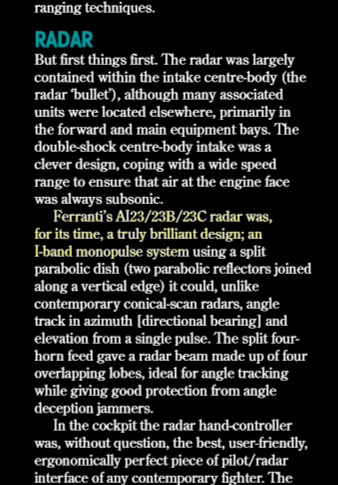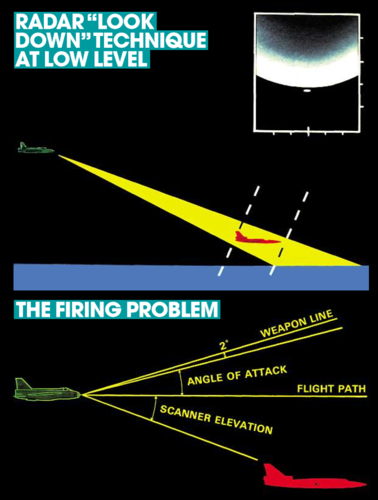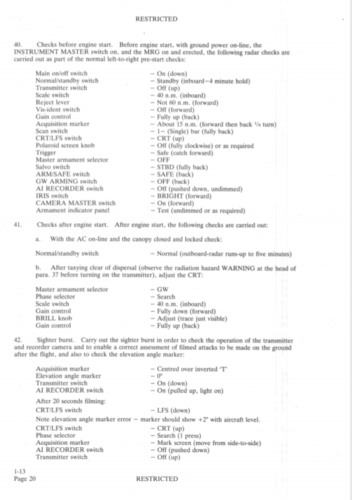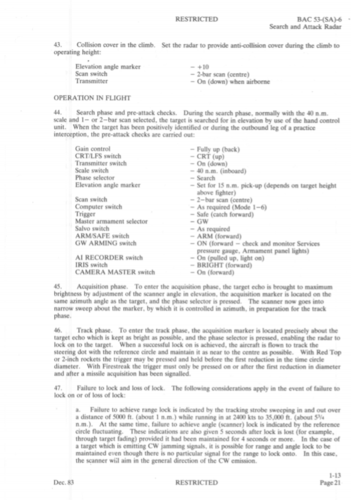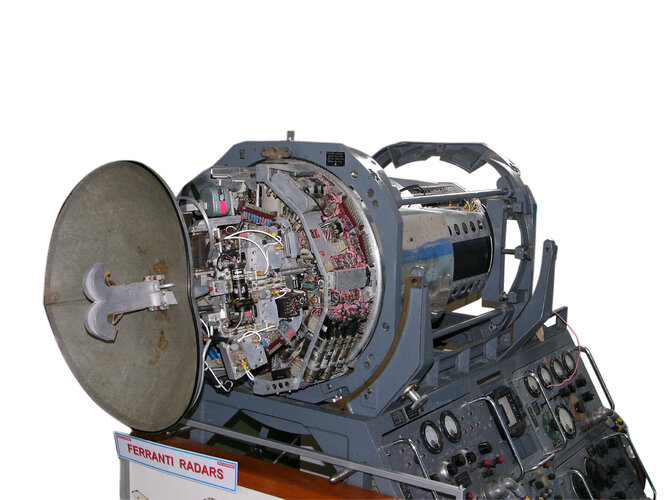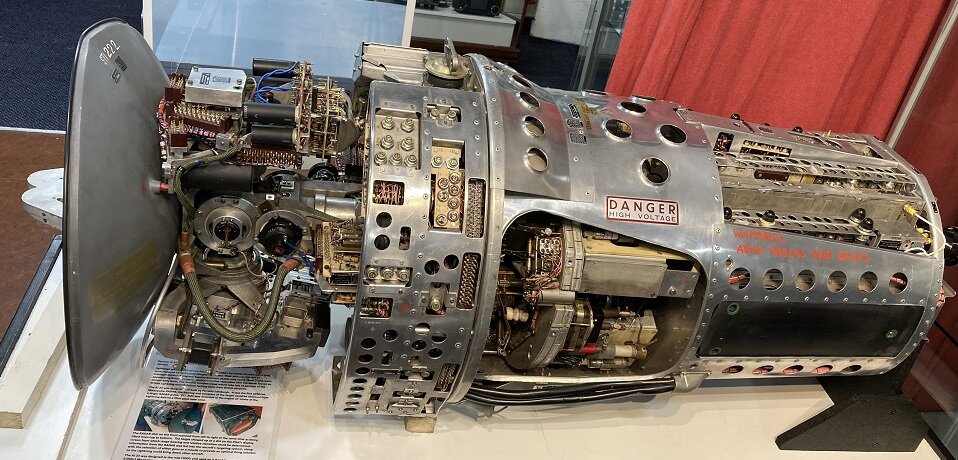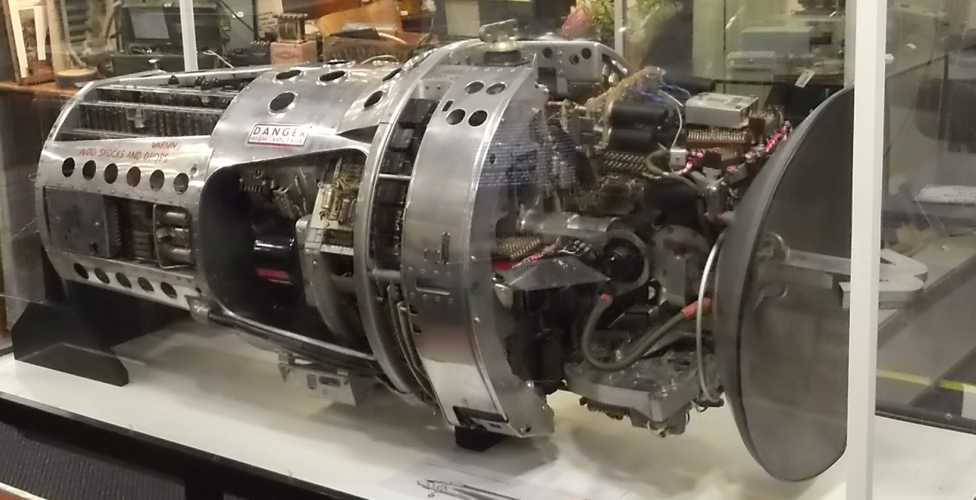How about the early Ferranti radar AI23?I've no info about it except it was used on Lightning fighter.Does AI23 radar has look-down/shoot-down capability?Is it a monopulse radar?What type antenna does it used?How does it compare with other air-born radars in the same period?
You are using an out of date browser. It may not display this or other websites correctly.
You should upgrade or use an alternative browser.
You should upgrade or use an alternative browser.
Ferranti ARI 5897 AI23 radar
- Thread starter shkval
- Start date
- Joined
- 27 December 2005
- Messages
- 17,753
- Reaction score
- 26,462
As it happens, I have just obtained a whole load of AI 23 information 
Could you tell me some info about it?overscan said:As it happens, I have just obtained a whole load of AI 23 information
- Joined
- 27 December 2005
- Messages
- 17,753
- Reaction score
- 26,462
Sure, I can post some info later.
- Joined
- 28 November 2006
- Messages
- 711
- Reaction score
- 737
PaulMM (Overscan) said:Sure, I can post some info later.
That was said over six years ago but in the meantime nothing has been posted. Why so?
Piotr
GUNDAM123dx
HAVE FUN
- Joined
- 31 October 2017
- Messages
- 62
- Reaction score
- 151
Yes.Is it a monopulse radar?
Attachments
Last edited:
GUNDAM123dx
HAVE FUN
- Joined
- 31 October 2017
- Messages
- 62
- Reaction score
- 151
Yes but limited - by using some techniques.Does AI23 radar has look-down/shoot-down capability?
Attachments
Last edited:
GUNDAM123dx
HAVE FUN
- Joined
- 31 October 2017
- Messages
- 62
- Reaction score
- 151
GUNDAM123dx
HAVE FUN
- Joined
- 31 October 2017
- Messages
- 62
- Reaction score
- 151
Let me give a summary.
AI.23 series:
AI.23 (or AI.23A(?)) - not very well - detect range maybe just 20+ or 30+ kilometres.
AI.23B/S: detect range - 111km
scanner limit - +-50° in azimuth and +-30° in elevation
scanning rate - 160°/s
AI.23C/D: some modifications (http://www.scottbouch.com/English-Electric-Lightning-T5-cockpit.html)(here's something about AI.23D)
added capability: If AI.23C/D is equiped on EE Lightning: pilots can control the seeker head of the Red Top missile manually even if the radar is in search mode instead of track / fire control mode, so that the pilot can launch the Red Top missile without alarming enemy's RWR.
All information sources is listed below.
AI.23 series:
AI.23 (or AI.23A(?)) - not very well - detect range maybe just 20+ or 30+ kilometres.
AI.23B/S: detect range - 111km
scanner limit - +-50° in azimuth and +-30° in elevation
scanning rate - 160°/s
AI.23C/D: some modifications (http://www.scottbouch.com/English-Electric-Lightning-T5-cockpit.html)(here's something about AI.23D)
added capability: If AI.23C/D is equiped on EE Lightning: pilots can control the seeker head of the Red Top missile manually even if the radar is in search mode instead of track / fire control mode, so that the pilot can launch the Red Top missile without alarming enemy's RWR.
All information sources is listed below.
GUNDAM123dx
HAVE FUN
- Joined
- 31 October 2017
- Messages
- 62
- Reaction score
- 151
From Lightning F.53 pilots notes.
All is about AI.23S.
AI.23S is the export version of AI.23B, the most commonly equipped AI.23 type.
All is about AI.23S.
AI.23S is the export version of AI.23B, the most commonly equipped AI.23 type.
Attachments
-
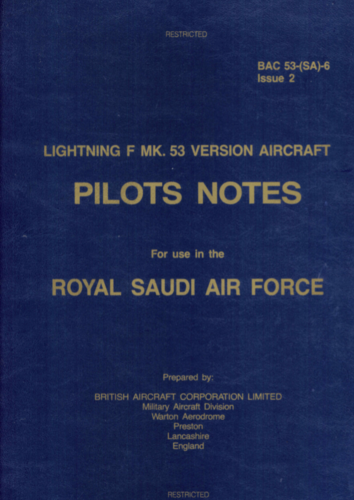 QQ截图20200120010706.png856.5 KB · Views: 152
QQ截图20200120010706.png856.5 KB · Views: 152 -
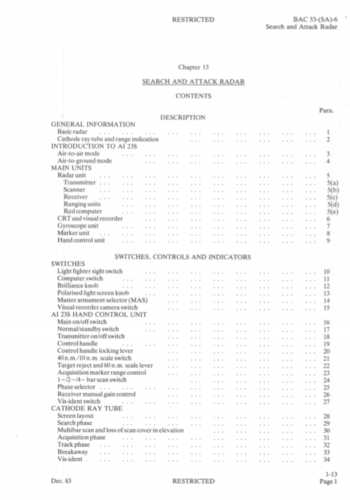 QQ截图20200120010424.png153.7 KB · Views: 120
QQ截图20200120010424.png153.7 KB · Views: 120 -
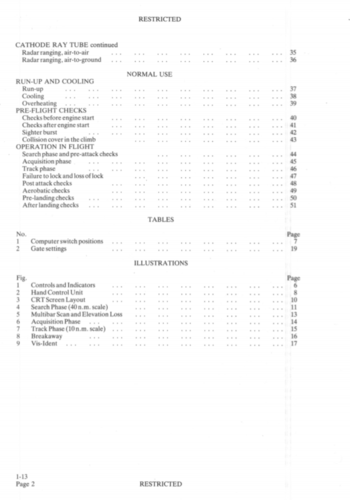 QQ截图20200120010440.png120.2 KB · Views: 113
QQ截图20200120010440.png120.2 KB · Views: 113 -
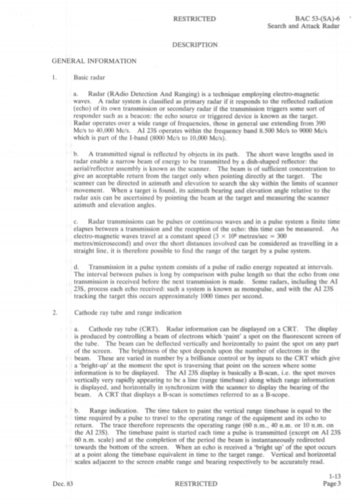 QQ截图20200120010448.png266.8 KB · Views: 117
QQ截图20200120010448.png266.8 KB · Views: 117 -
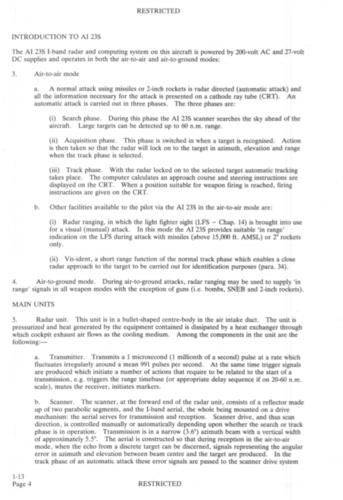 QQ截图20200120010456.png247.8 KB · Views: 111
QQ截图20200120010456.png247.8 KB · Views: 111 -
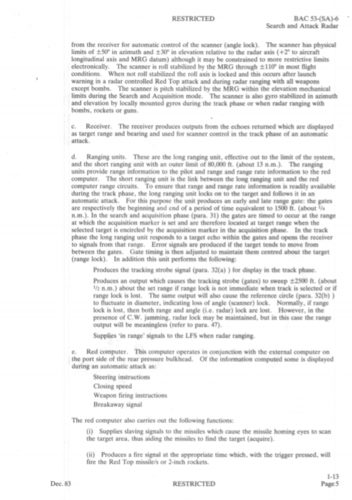 QQ截图20200120010503.png262.6 KB · Views: 133
QQ截图20200120010503.png262.6 KB · Views: 133 -
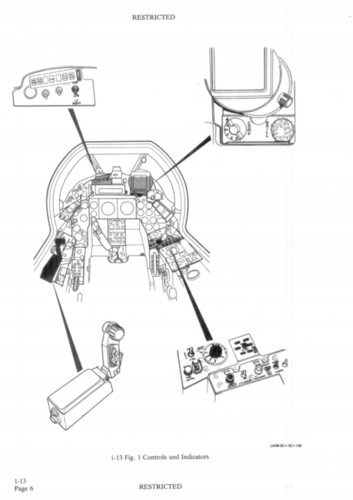 QQ截图20200120010510.png162.5 KB · Views: 147
QQ截图20200120010510.png162.5 KB · Views: 147 -
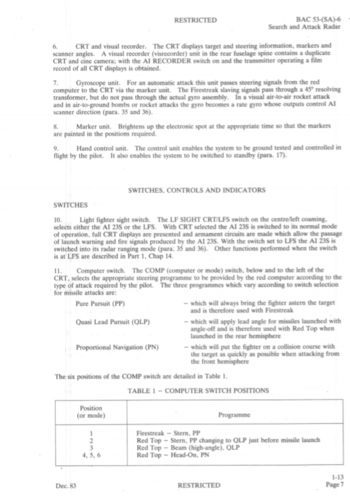 QQ截图20200120010516.png219.6 KB · Views: 128
QQ截图20200120010516.png219.6 KB · Views: 128 -
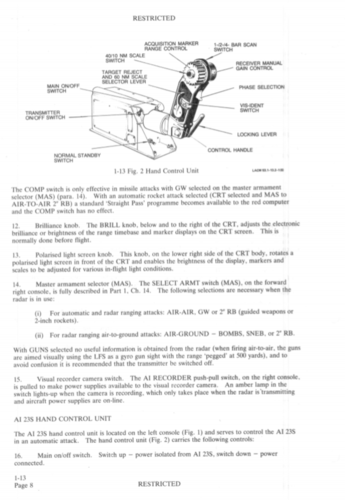 QQ截图20200120010522.png222.6 KB · Views: 117
QQ截图20200120010522.png222.6 KB · Views: 117 -
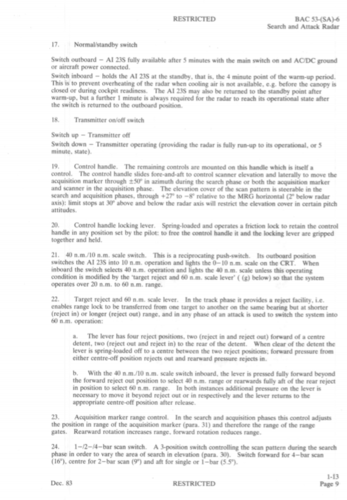 QQ截图20200120010528.png255.3 KB · Views: 122
QQ截图20200120010528.png255.3 KB · Views: 122
Last edited:
GUNDAM123dx
HAVE FUN
- Joined
- 31 October 2017
- Messages
- 62
- Reaction score
- 151
Continue
Attachments
-
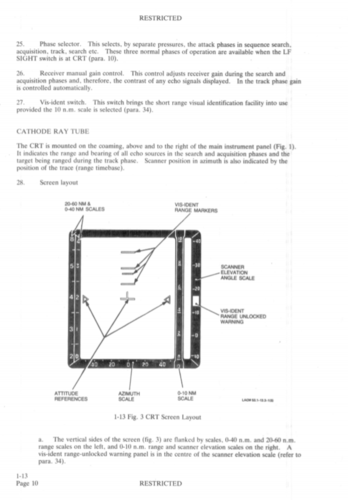 QQ截图20200120010534.png160.9 KB · Views: 123
QQ截图20200120010534.png160.9 KB · Views: 123 -
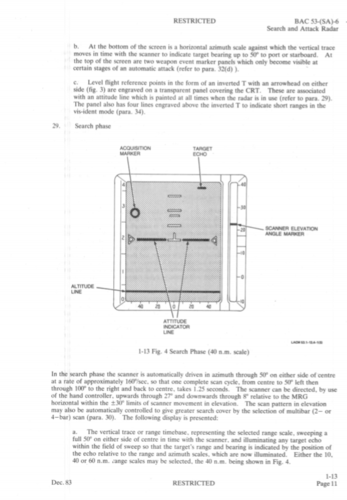 QQ截图20200120010541.png227.8 KB · Views: 108
QQ截图20200120010541.png227.8 KB · Views: 108 -
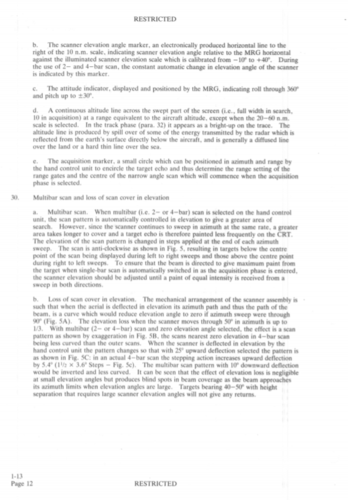 QQ截图20200120010549.png248.3 KB · Views: 97
QQ截图20200120010549.png248.3 KB · Views: 97 -
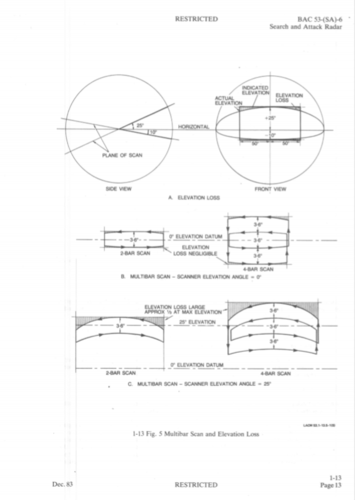 QQ截图20200120010556.png116.5 KB · Views: 97
QQ截图20200120010556.png116.5 KB · Views: 97 -
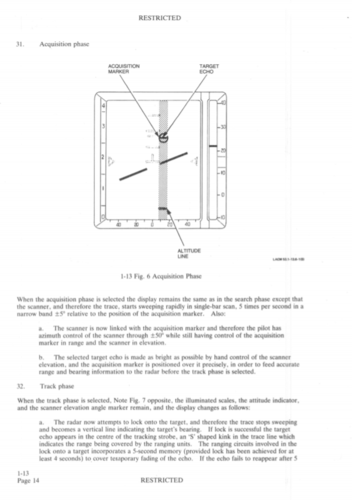 QQ截图20200120010605.png161.2 KB · Views: 99
QQ截图20200120010605.png161.2 KB · Views: 99 -
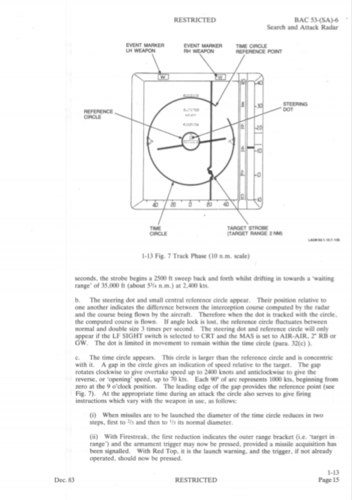 QQ截图20200120010611.png192.1 KB · Views: 94
QQ截图20200120010611.png192.1 KB · Views: 94 -
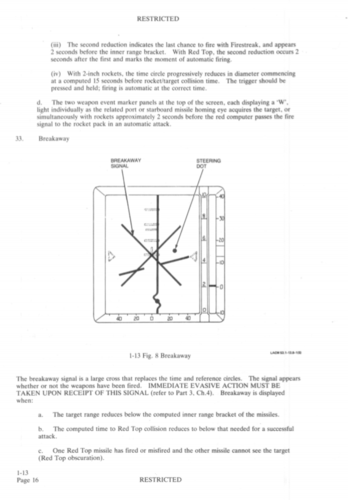 QQ截图20200120010619.png153.4 KB · Views: 94
QQ截图20200120010619.png153.4 KB · Views: 94 -
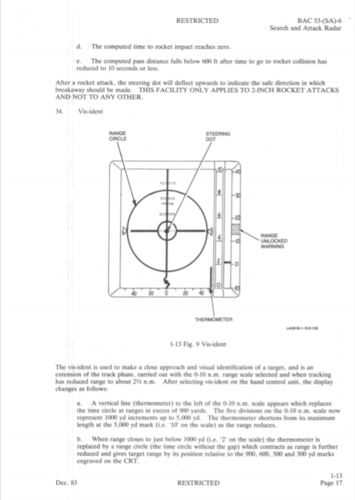 QQ截图20200120010625.png159.1 KB · Views: 93
QQ截图20200120010625.png159.1 KB · Views: 93 -
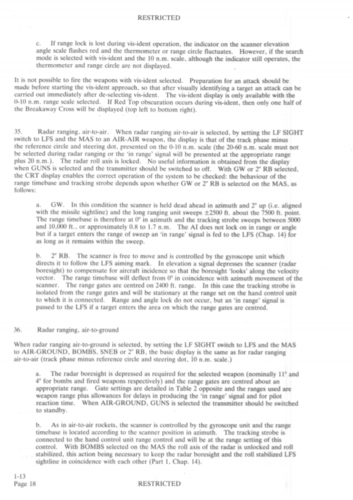 QQ截图20200120010632.png282 KB · Views: 85
QQ截图20200120010632.png282 KB · Views: 85 -
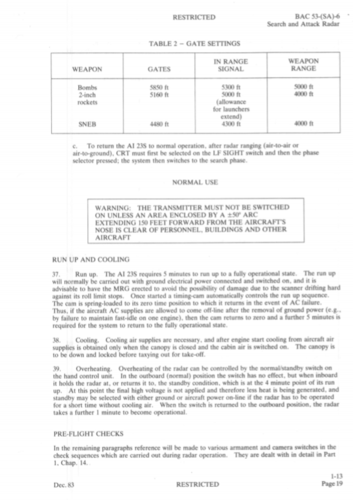 QQ截图20200120010639.png212.7 KB · Views: 89
QQ截图20200120010639.png212.7 KB · Views: 89
Last edited:
GUNDAM123dx
HAVE FUN
- Joined
- 31 October 2017
- Messages
- 62
- Reaction score
- 151
GUNDAM123dx
HAVE FUN
- Joined
- 31 October 2017
- Messages
- 62
- Reaction score
- 151
And another source: Aviation Classics 5 English Electric Lightning
Attachments
-
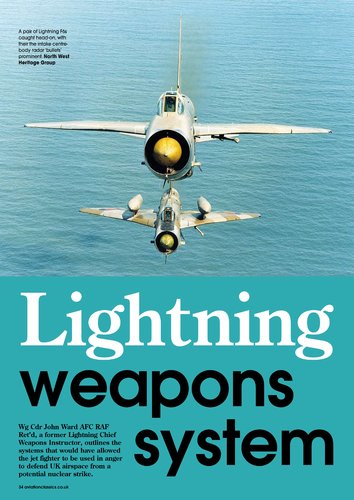 012001161163_0LightningWeaponsSystem_1.Jpeg2.7 MB · Views: 127
012001161163_0LightningWeaponsSystem_1.Jpeg2.7 MB · Views: 127 -
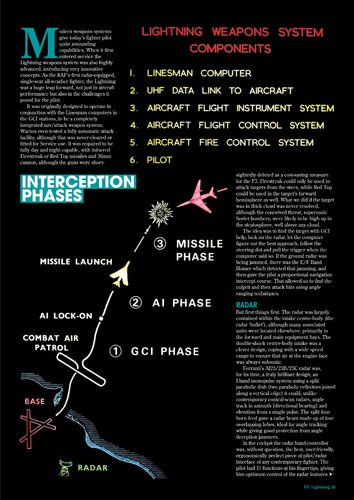 012001161163_0LightningWeaponsSystem_2.Jpeg2.3 MB · Views: 132
012001161163_0LightningWeaponsSystem_2.Jpeg2.3 MB · Views: 132 -
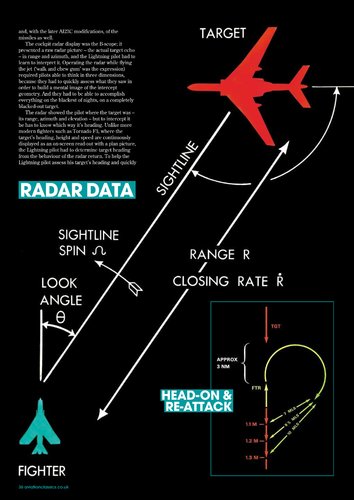 012001161163_0LightningWeaponsSystem_3.Jpeg1.4 MB · Views: 112
012001161163_0LightningWeaponsSystem_3.Jpeg1.4 MB · Views: 112 -
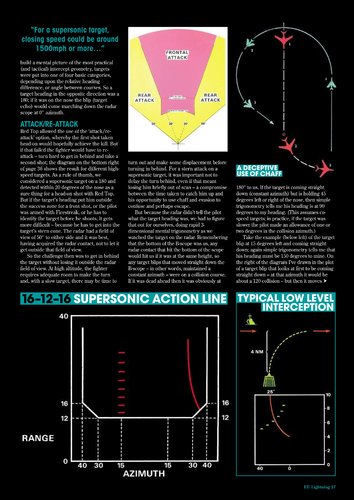 012001161163_0LightningWeaponsSystem_4.Jpeg2.3 MB · Views: 113
012001161163_0LightningWeaponsSystem_4.Jpeg2.3 MB · Views: 113 -
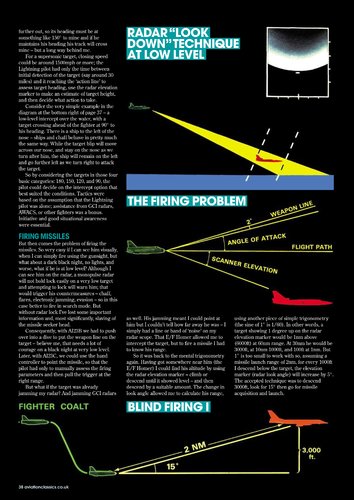 012001161163_0LightningWeaponsSystem_5.Jpeg2.5 MB · Views: 105
012001161163_0LightningWeaponsSystem_5.Jpeg2.5 MB · Views: 105 -
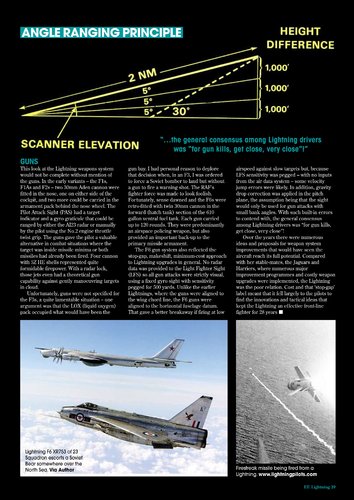 012001161163_0LightningWeaponsSystem_6.Jpeg2.9 MB · Views: 154
012001161163_0LightningWeaponsSystem_6.Jpeg2.9 MB · Views: 154
Last edited:
- Joined
- 27 December 2005
- Messages
- 17,753
- Reaction score
- 26,462
Hmm, it does seem like I missed this topic for 14 years 
Will post some stuff.
Will post some stuff.
- Joined
- 27 December 2005
- Messages
- 17,753
- Reaction score
- 26,462
Some interesting snippets from a Ferranti in-house journal. Photo of an AI23 is from Chris Gibson.
The evolution of AI23, or ARI 5897 as it was officially designated, was in fact the genesis of modern, purpose designed Airborne Interception Radars. The fact that it was only a fraction of the weight and size of its predecessor, A118, was only part of the miracle so to speak; the unique feature of the set lay in the Radio Frequency Block. By a system of tape control milling machines. the control design of which was in-house Ferranti, the fourway feed from aerial was matched to this RF Block to provide a three channel output system:
1) A Sum Channel that added all four feeds in vector sumation
2) An Elevation Difference Channel that produced a vector summation of the sum of the two horizontal upper feeds minus the sum of the two lower horizontal feeds.
3) An Azimuth Difference Channel that produced a vector summation of the sum of the two starboard vertical feeds minus the sum of the two port vertical feeds.
The whole of this was achieved within the milled RF Block. All the waveguide couplings and splits. phase shifters, the input for the local oscillator. the connections and housing for the balanced mixers, the provision for an Automatic Frequency Control (AFC) Detector and phase adjusters for the Difference Channels were all there in the one assembly.
This was something that had never been achieved anywhere before and represented a tremendous leap in capability and reduction in the physical size that probably ranked with the transistor to the valve. The added bonus was that the result was not only space saving but produced a vastly improved front end performance. The decision was also taken not to follow the road to transistorisation at that time, but to stay with valve technology. This, in fact, proved to be a significant factor in the relatively low figure of obsolescence experienced during the service life of all the variants from the AI23 through to the A123D; the valves used at the Alpha were still available at the Omega.
The transmitter was built around the English Electric Valve Co. magnetron basic Type 4J50; the service types used were the CV2424, 2425 and 2426. The choice of magnetron allowed a measure of frequency selection. The radar was a Fixed Frequency Monopulse Tracker, operating in the X-band region around 8.5 to 8.7 Gcls at a transmitter power of 200KW peak. This high peak power endowed the radar with remarkable Air/Air detection range, figures in fact that modern Airborne Radars strive to match. The down side was that the world and his wife knew that you were there as soon as you flicked the switch to TX! The other remarkable thing was that the transmitter was part of the roll stabilised assembly; therefore this reduced the number of RF rotating joints required.
So, we had a radar set with a reduced weight, fully roll stabilised, high power, monopulse, with the ability to search. acquire and track targets, allied to an analogue computer that controlled the firing brackets and ballistic equations for the weapons. This was the first radar with this level of capability to go into squadron service anywhere in the world. The first aircraft, with the AI23 variant radar. carried the Firestreak missile. This was a pure pursuit device, therefore all the calculations were concerned with attacks from the rear sector. Later alc, fitted with the A123B. had additional kinematic computing capacity to include collision course attacks for the Red Top missile. since this had the capability to cover all angles of attack from head on to tail pursuit.
Later versions, from AI23B onwards, were fitted with S-band dipoles on the aerial and these were coupled to an external receiver which allowed the pilot to passively scan for S-band returns reflected from target aircraft being illuminated by ground CW radar. The video levels from these returns were displayed along the bottom of the radar display as noise. As soon as a 'peak' started to build at a particular angle of the nose the pilot would turn the aircraft until the peak was in the centre of the scan. By virtue of experience, the pilot assessed the level of the return to an estimate of range. As soon as he felt that he was close enough to prosecute an attack, he would switch the radar transmitter on and 'lock' to the target. This could be done at ranges up to 30nm, although the closer he could get on passive the better.
The radar continued in development phases through AI23C to 23D. It was this last update that put the system back on the 'Secret' list, with the package being referred to as the New Facility. The concept contained in this Facility provided an element of track-while-scan; this allows you to provide information to your on-board missiles of the target position etc., without the need to stop your radar scanning and make it lock to the target a/c. Details of this are not available for, although the AI23 is long gone, the concept is still employed in some form or other in systems still in service.
The export versions for Saudi and Kuwait were designated AI23S and Al23K respectively. They did not have the S-band facility and, initially, the Red Top capability. The Red Top missile was still on the Secret list during the 1967/68 delivery period, although it was, however, retro-fitted al a later date. The original radars supplied under the 'Magic Carpet' advance equipment contract for flight training etc. were suitably de-modified. The Kuwaiti assets were transferred to Saudi Arabia soon after the first delivery. The back up training and spares contract was appropriately referred to as 'Magic Underlay' -at least, it seemed quite appropriate at the time!
There was another export customer in the shape of Brazil. Some 11 systems had been built when, for some reason to which we were not privy, the order was cancelled and the sets were transferred to the RAF.
Attachments
Last edited:
- Joined
- 27 December 2005
- Messages
- 17,753
- Reaction score
- 26,462
This is pretty interesting.
Attachments
-
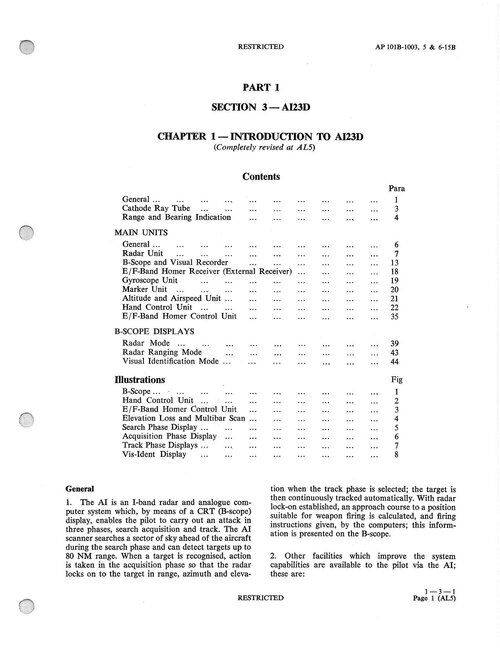 english_electric_lightning_f3_t5_f6_aircrew_manual_-_weps01.jpg262.3 KB · Views: 126
english_electric_lightning_f3_t5_f6_aircrew_manual_-_weps01.jpg262.3 KB · Views: 126 -
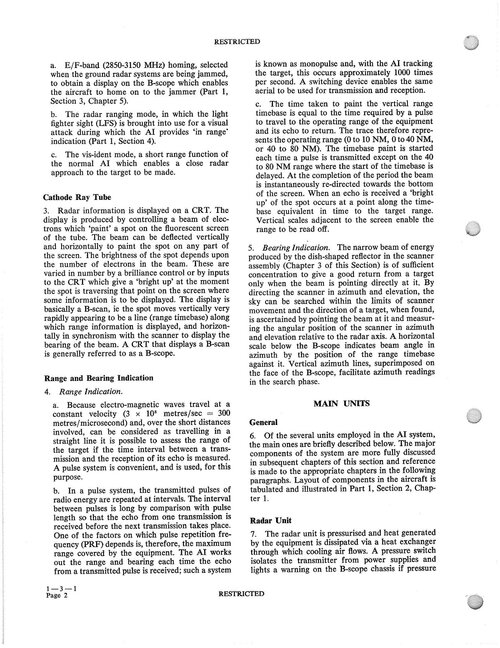 english_electric_lightning_f3_t5_f6_aircrew_manual_-_weps02.jpg576.3 KB · Views: 98
english_electric_lightning_f3_t5_f6_aircrew_manual_-_weps02.jpg576.3 KB · Views: 98 -
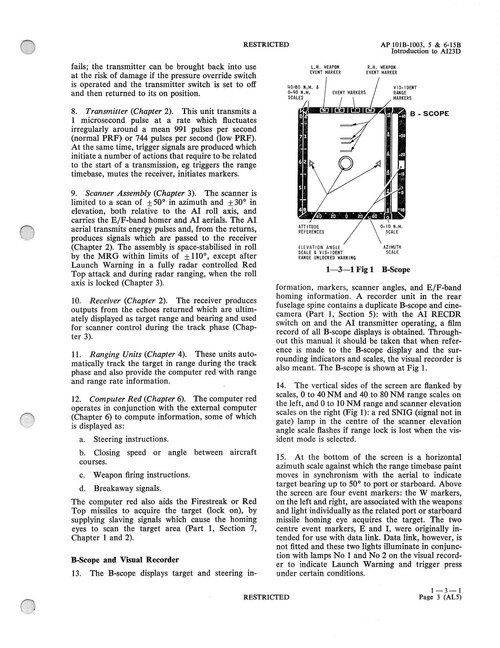 english_electric_lightning_f3_t5_f6_aircrew_manual_-_weps03.jpg502.2 KB · Views: 91
english_electric_lightning_f3_t5_f6_aircrew_manual_-_weps03.jpg502.2 KB · Views: 91 -
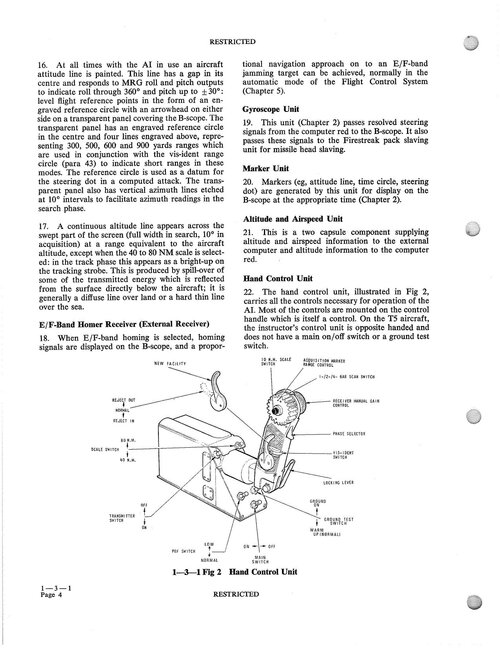 english_electric_lightning_f3_t5_f6_aircrew_manual_-_weps04.jpg395 KB · Views: 91
english_electric_lightning_f3_t5_f6_aircrew_manual_-_weps04.jpg395 KB · Views: 91 -
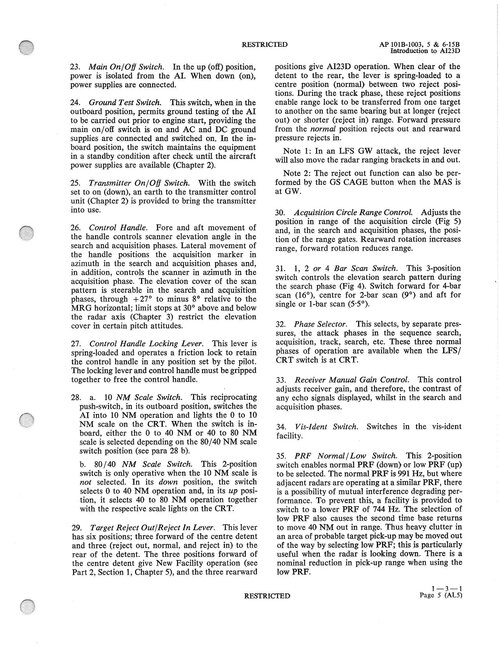 english_electric_lightning_f3_t5_f6_aircrew_manual_-_weps05.jpg574.9 KB · Views: 81
english_electric_lightning_f3_t5_f6_aircrew_manual_-_weps05.jpg574.9 KB · Views: 81 -
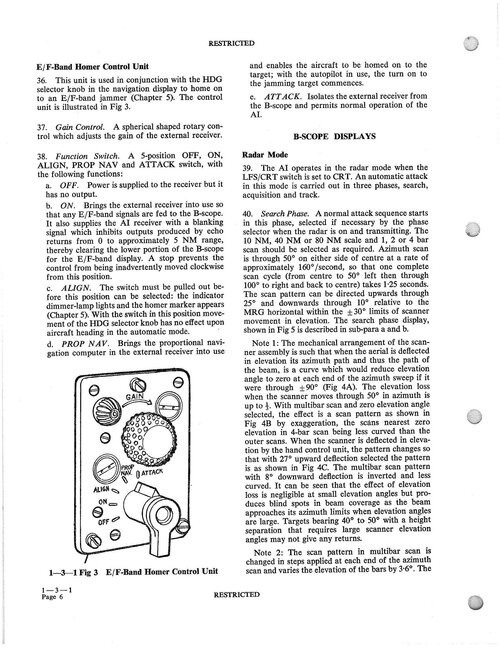 english_electric_lightning_f3_t5_f6_aircrew_manual_-_weps06.jpg529.8 KB · Views: 86
english_electric_lightning_f3_t5_f6_aircrew_manual_-_weps06.jpg529.8 KB · Views: 86 -
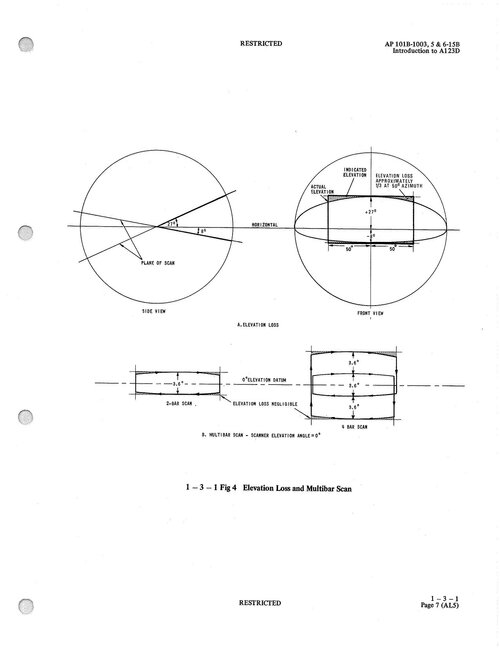 english_electric_lightning_f3_t5_f6_aircrew_manual_-_weps07.jpg127.5 KB · Views: 87
english_electric_lightning_f3_t5_f6_aircrew_manual_-_weps07.jpg127.5 KB · Views: 87 -
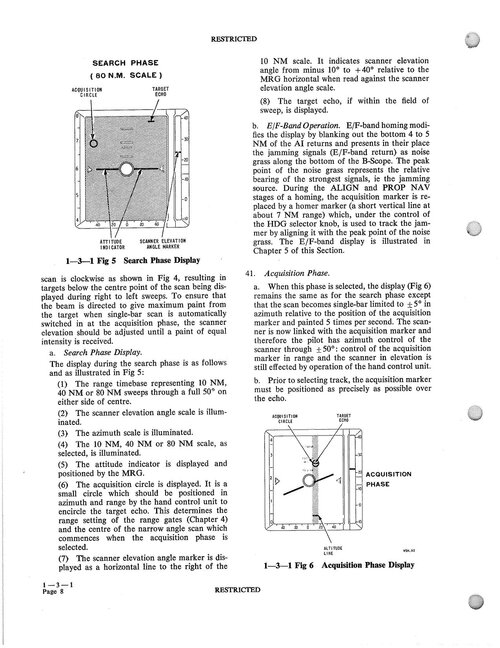 english_electric_lightning_f3_t5_f6_aircrew_manual_-_weps08.jpg454 KB · Views: 85
english_electric_lightning_f3_t5_f6_aircrew_manual_-_weps08.jpg454 KB · Views: 85 -
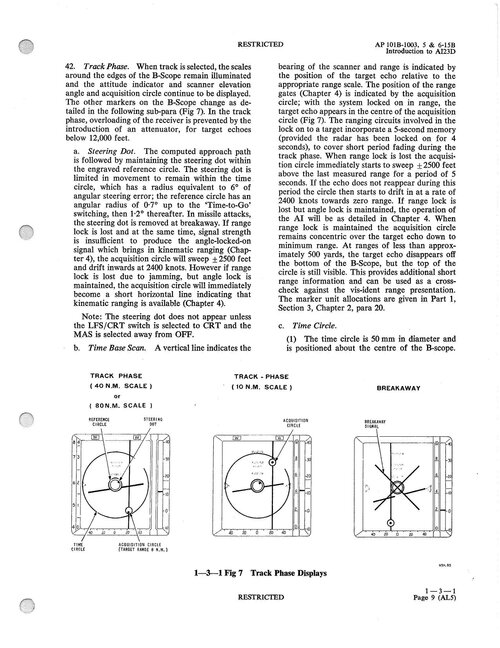 english_electric_lightning_f3_t5_f6_aircrew_manual_-_weps09.jpg465.8 KB · Views: 77
english_electric_lightning_f3_t5_f6_aircrew_manual_-_weps09.jpg465.8 KB · Views: 77 -
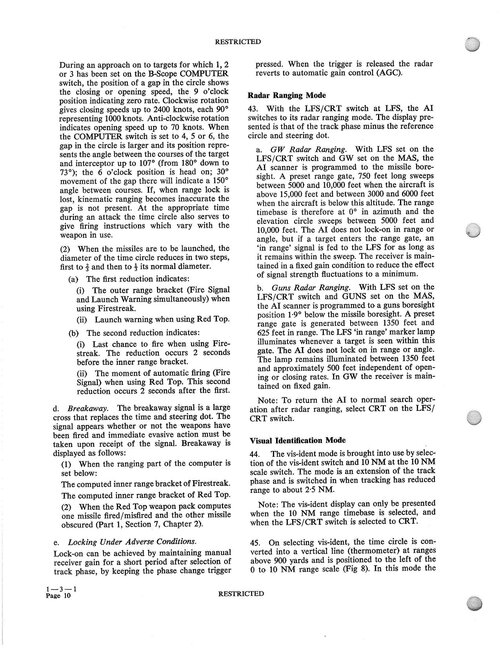 english_electric_lightning_f3_t5_f6_aircrew_manual_-_weps10.jpg560.9 KB · Views: 84
english_electric_lightning_f3_t5_f6_aircrew_manual_-_weps10.jpg560.9 KB · Views: 84
- Joined
- 27 December 2005
- Messages
- 17,753
- Reaction score
- 26,462
More
Attachments
-
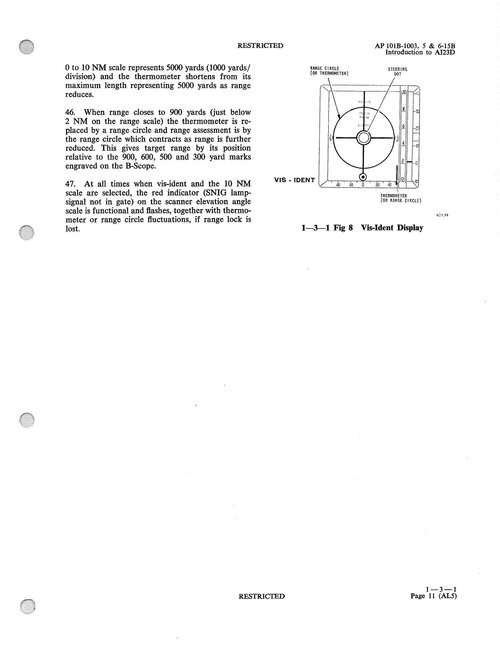 english_electric_lightning_f3_t5_f6_aircrew_manual_-_weps11.jpg161.4 KB · Views: 81
english_electric_lightning_f3_t5_f6_aircrew_manual_-_weps11.jpg161.4 KB · Views: 81 -
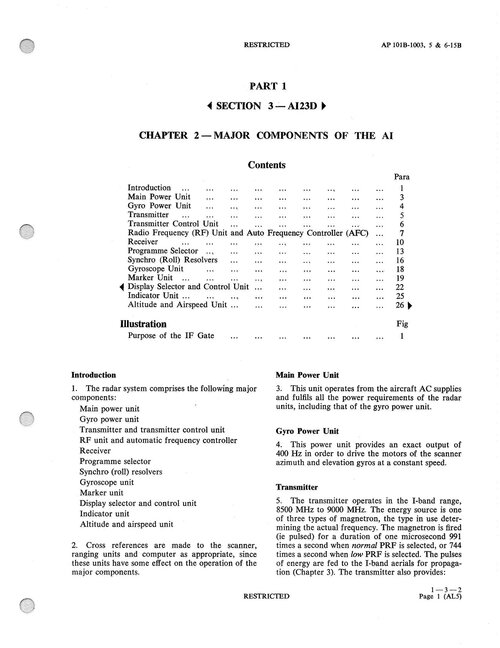 english_electric_lightning_f3_t5_f6_aircrew_manual_-_weps12.jpg274.8 KB · Views: 78
english_electric_lightning_f3_t5_f6_aircrew_manual_-_weps12.jpg274.8 KB · Views: 78 -
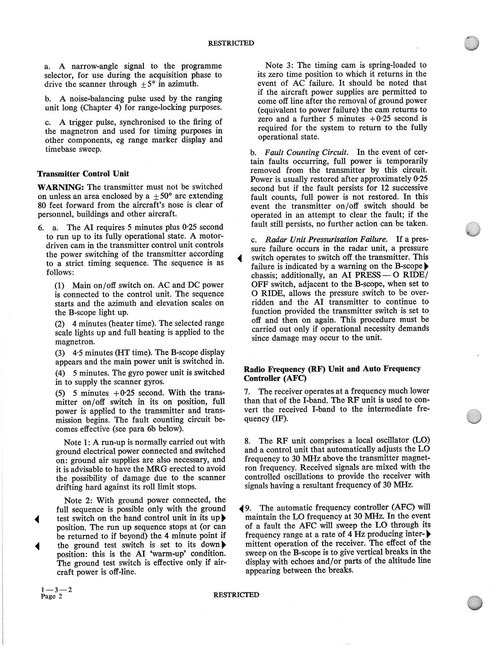 english_electric_lightning_f3_t5_f6_aircrew_manual_-_weps13.jpg558.5 KB · Views: 81
english_electric_lightning_f3_t5_f6_aircrew_manual_-_weps13.jpg558.5 KB · Views: 81 -
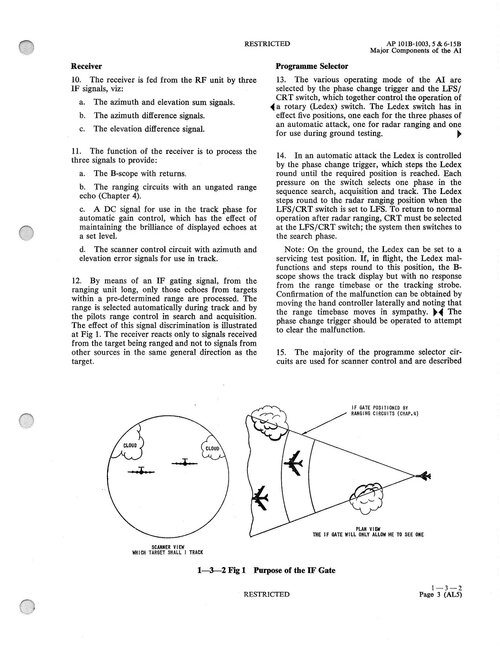 english_electric_lightning_f3_t5_f6_aircrew_manual_-_weps14.jpg375.5 KB · Views: 82
english_electric_lightning_f3_t5_f6_aircrew_manual_-_weps14.jpg375.5 KB · Views: 82 -
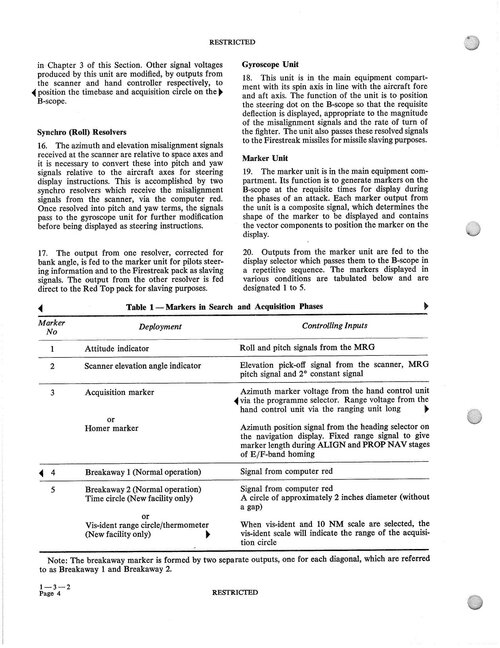 english_electric_lightning_f3_t5_f6_aircrew_manual_-_weps15.jpg445.1 KB · Views: 121
english_electric_lightning_f3_t5_f6_aircrew_manual_-_weps15.jpg445.1 KB · Views: 121
There is a complete AI23 radar on display in the "Heritage Centre" at the Leonardo (formerly Ferranti) factory at Crewe Toll in Edinburgh. I assume it must be a later model because there is a (power supply?) module which has TO3 - style transistors mounted on it.
Ferranti were working on an up dated radar ai 23 c with limited look down facility,How about the early Ferranti radar AI23?I've no info about it except it was used on Lightning fighter.Does AI23 radar has look-down/shoot-down capability?Is it a monopulse radar?What type antenna does it used?How does it compare with other air-born radars in the same period?
SeaslugMk2
'Curator' of the Seaslug website.
As I mentioned on the TSR2 thread, we have an AI23 at the Museum of Communication but it is currently inaccessible. If I can get to it I'll take some pictures, but don't hold your breath!
SRJ.
SRJ.
SeaslugMk2
'Curator' of the Seaslug website.
Unless there is a last minute change of plan, the AI23 will be part of this year's display at the Museum of Communication. I'll get some pictures of it as soon as I can. As far as I can see it is an 'A' model as there are no S band receivers visible.
SRJ.
SRJ.
baigar
Vintage avionics and computer hobbyist / Physicist
Yeah, looking forward to see more detailes pictures. Out of curiosity: Has a manual with schematics survived?
SeaslugMk2
'Curator' of the Seaslug website.
SeaslugMk2
'Curator' of the Seaslug website.
Similar threads
-
Defunct site about Ferranti radars
- Started by nova10
- Replies: 8
-
-
Ferranti F100-L Microprocessor family
- Started by Grey Havoc
- Replies: 2
-
Ferranti Blue Fox / Red Fox radar
- Started by overscan (PaulMM)
- Replies: 7
-
Ferranti radars - Blue Falcon / Blue Hawk / Blue Vixen
- Started by Mike Pryce
- Replies: 33

